Shaping Our Way to Perfection
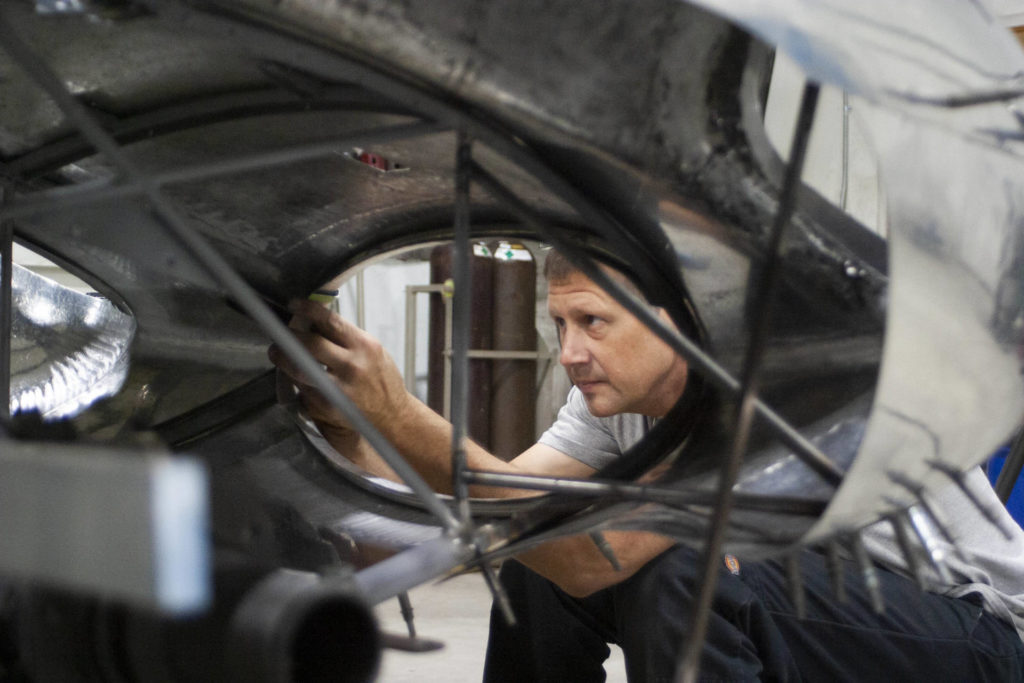
At Motion Products, the metal fabrication team sets the foundation for the body of a car. They face challenges by creating solutions for the repairs they perform every day. The craftsmanship and skill level of our team is like no other.
Our lead metal fabricator is Chip Pelnar. Chip started with a local metal shop when he was 17 years old, helping clean the workspace and lending a hand to the metal fabricators when necessary. He was offered a full-time position when he graduated high school and started rebodying cars and building chassis. The shop had a working relationship with Motion Products, Inc. as well. In the early days, MPI sent cars that were frequently raced to this local shop for metal work, then MPI would finish the car.
Wayne Obry, founder of MPI, always helped coach Chip on his work and now Chip is working to pass down his knowledge to our younger employees. “Wayne was always nice. I would build some panels and then he would critique them, then I would go back and rebuild them and he would critique them again”, said Chip. This feedback loop helped Chip learn different techniques to shape metal. Later, Chip was hired at MPI in the metal shop and has been with us for 18 years.
The Process
When cars come into our shop, they often look beautiful already. However, there’s always surprises hidden underneath the paint. It is our responsibility to repair each car as authentically as is possible given the context of each project. That could mean correcting repairs that were done in the past, or simply repairing corrosion. Properly and authentically correcting shapes and gaps sets our paint department up for a positive result. “When a car is delivered to the customer with less body filler than it had on it when it got here, we’ve succeeded,” said Chip. The dedication MPI’s team applies to the craft of automotive restoration is what sets up those successes.
Before any paint is removed, each project is evaluated by our metal fabrication department for flaws or concerns to re-visit. They take note of where corrosion could be found, what parts and panels are original and what might have been repaired. Our team occasionally runs into original paint which is always exciting. For example, on one car the team found remnants of the original interior color underneath an oil filler door. Had that been stripped away we would have had no evidence of that true original color. After the initial inspection is complete, the body’s paint is stripped by our paint department. Once the car is in bare metal the team confirms what repairs need to take place.
“Ideally it’s nice to have two people on a vehicle”, said Chip. One person on the front, and one takes the back meeting in the middle. Then they tackle the doors and deck lids next. “One of our past employees and I would always look at each other’s progress and in a way, a friendly competition would arise. We did things a little differently throughout, but in the end it was all the same. A little friendly competition never hurts and you push yourself a little more when someone else is doing something similar to you”, said Chip.
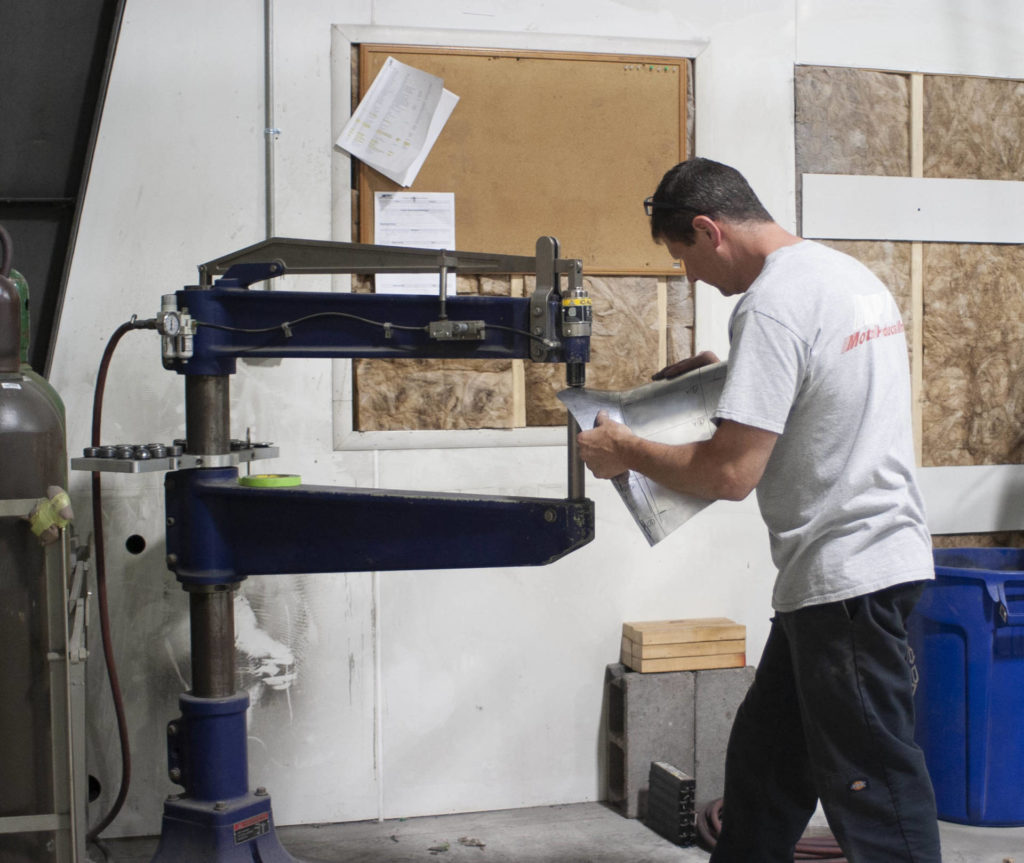
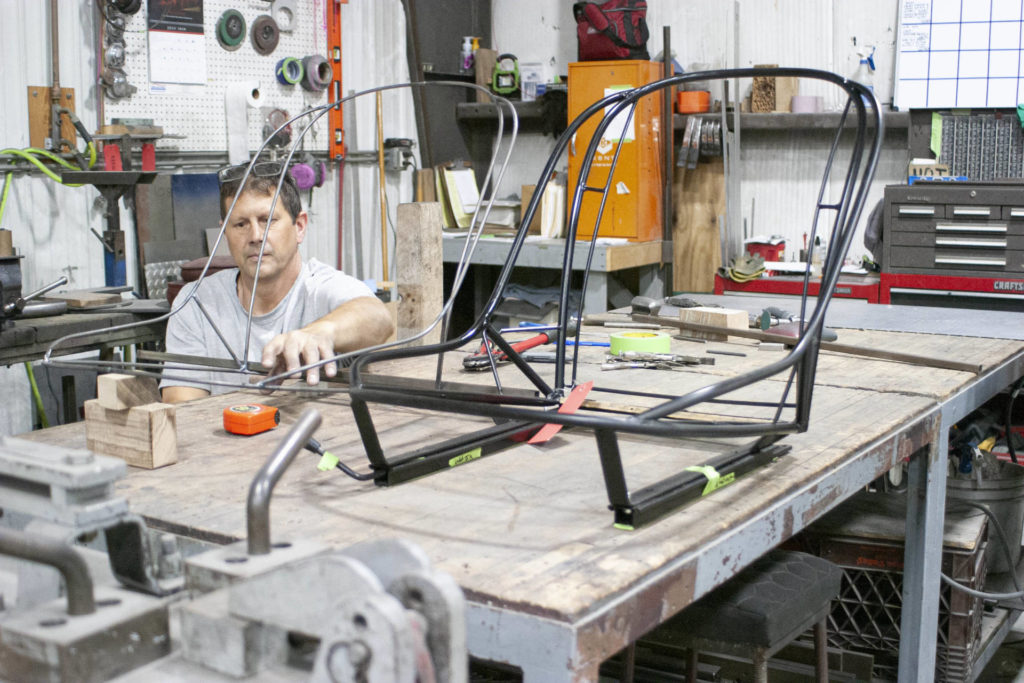
“We look at these cars so differently than the average person does. We critique them and we look for flaws and things that don’t look right. The average person, when they see one of the cars roll out of here all they see is how beautiful the paint is and the shiny chrome, but we look at it and say, ‘Oh, that headlight is a little lower than the other one, or this turn signal light is at a different angle.’ The car is still beautiful, but sometimes they are just built like that. They are hand built cars and there are flaws. Some people see it and value it”, said Chip.
Understanding the Past
Our research team plays an important role in the metal/fabrication department by locating relevant in-period photographs for reference during this stage of the restoration. Observing the construction of the vehicle in its bare metal state and comparing with in-period photographs, our team is able to determine the extent of repairs that have taken place throughout the vehicle’s history. Collecting as many photographs as possible from different points in the vehicle’s timeline helps us better understand the history; including where or when damage occurred or when a modification would have been made. Close examination of these historic photographs and understanding the tendencies of the coachbuilders are fundamental steps in correcting and authenticating the coachwork of a historic vehicle.
When a section of the vehicle body is in poor shape the team determines whether they can salvage that original material. This is our first priority. In some cases, There’s no other option but to reconstruct a section of the body or lid. The first action is to take accurate measurements and scale the area from in period photographs supplied by our researchers. After careful assessment, they make a pattern or template for guidance. The team often spends time making three dimensional shaping bucks out of wire or cardboard to have something they can see and place over what they are working on to make sure they stay on track with the proper shape.
When fabricating a panel from scratch, Chip uses photos and references the opposing side when he can, to create a template. Starting with a small area of the panel he makes a gridded template to guide him as he shapes the metal. Once he’s finished the templates he lays them out over the car in place to visualize the finished panel. From there he takes flat pieces of sheet metal and little by little makes adjustments using the power hammer, english wheel, body hammers and other tools. Then he welds in the panel, cleans up the welds and checks fitment if needed.
Reliable Methods
MPI’s utilizes several methods and equipment types to achieve our customer’s goals for their project. The power hammer, planishing hammer, and the English wheel are some of the tools our team uses daily. Even an old tree stump can be employed to create or modify shapes. Then there are other stages of the metal process like welding, and pining pieces to be attached to the body. Along the way, the metal department will fit trim or mechanical components as well as having the body department go over the car to make sure the project is ready to move to the next stages in the paint shop.
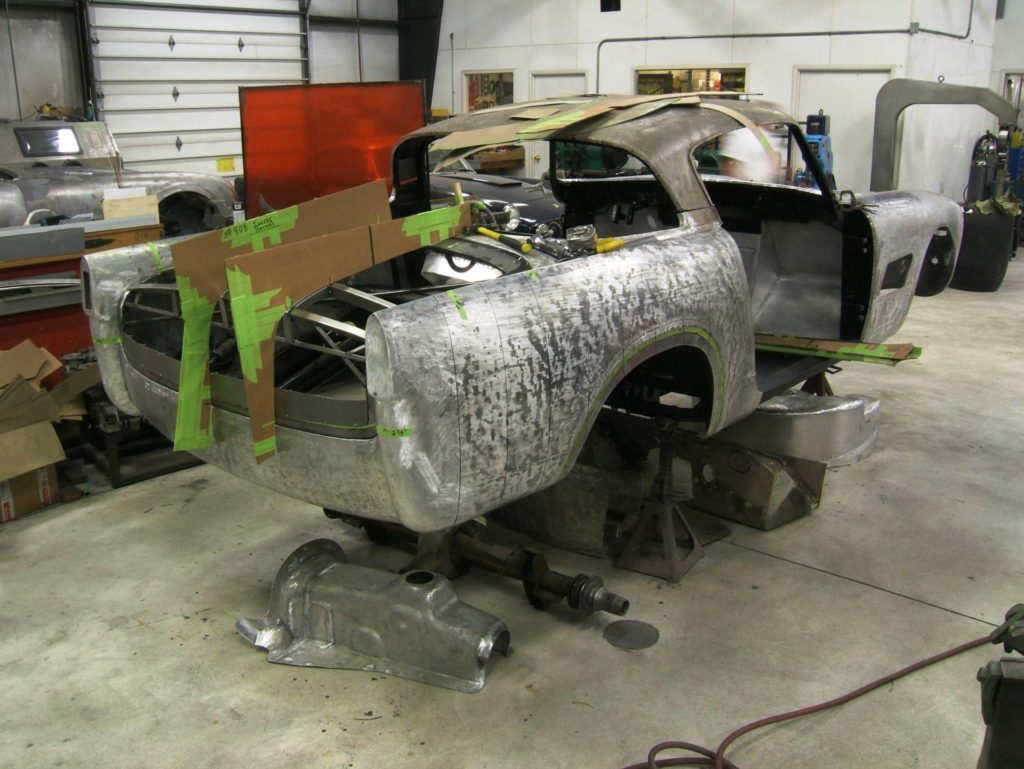
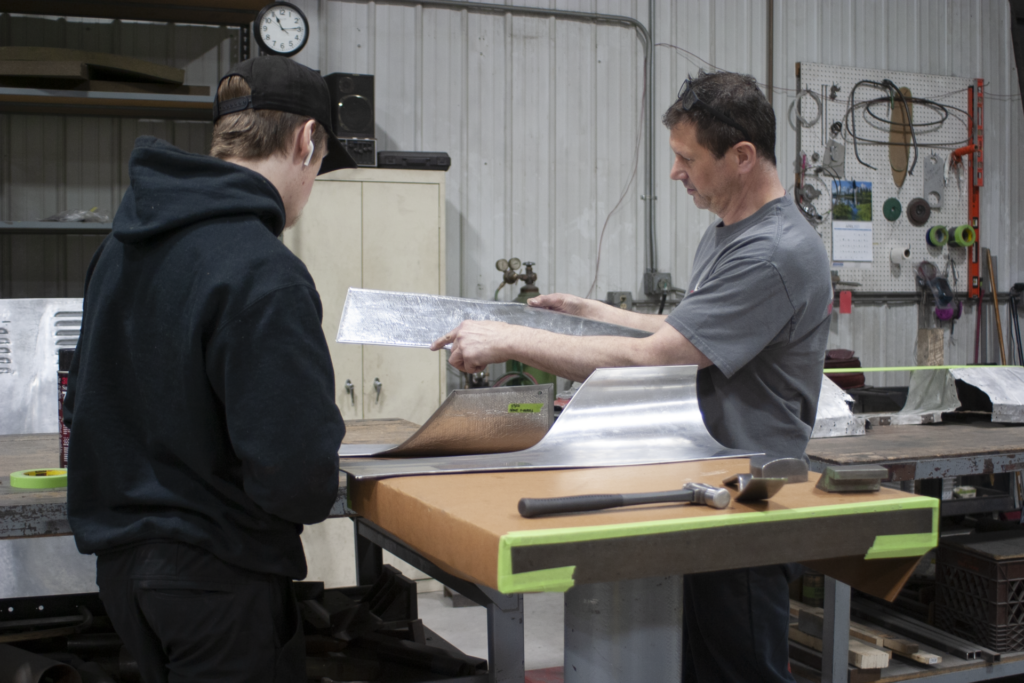
Our team relies on communication. Being able to bounce ideas off others is important especially when a new problem comes to the surface. There are so many challenges and problems to solve, and our team has years of combined experience with these cars, which makes brainstorming solutions come easy to our team. They are always learning new ways to make tough repairs. “Every car is a learning curve. We always have an idea of how to approach a repair, but we also work on cars we’ve never seen before making our job interesting. This is my career and I’m honored to be restoring not only a unique classic car, but a piece of history”, said Chip.
Seeing a project through to completion is really rewarding for us all here at Motion Products, Inc. Our team takes pride in their work and is always up for a challenge. If your project is ready for metal repair or full restoration, contact us today!
920-725-4688
Click here to contact us about your restoration needs!
Leave a Reply